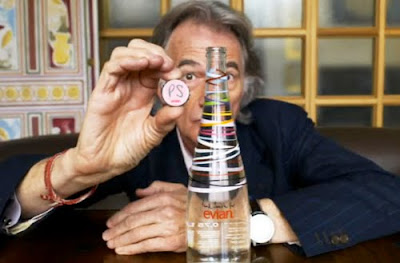 Francis Bacon was born on 28th October 1909 in Dublin from English parents. He was a descendant of Sir Francis Bacon, the famous philosopher who made significant contribution to the scientific method. In 1914, his family moved to London and when the war was over, they spent most of their time moving from Ireland to London. Then, he was thrown out of the family by his father because of his homosexuality. He was therefore forced to settle in London with just 3£ of weekly allowance from his mother. In 1927, at the age of sixteen, he travelled to Berlin and to Paris where he attended a Picasso exhibition, which encouraged him to start painting and drawing. Afterwards, he returned to London where he worked as a furniture and interior designer but quickly devoted himself to painting only.
Francis Bacon was born on 28th October 1909 in Dublin from English parents. He was a descendant of Sir Francis Bacon, the famous philosopher who made significant contribution to the scientific method. In 1914, his family moved to London and when the war was over, they spent most of their time moving from Ireland to London. Then, he was thrown out of the family by his father because of his homosexuality. He was therefore forced to settle in London with just 3£ of weekly allowance from his mother. In 1927, at the age of sixteen, he travelled to Berlin and to Paris where he attended a Picasso exhibition, which encouraged him to start painting and drawing. Afterwards, he returned to London where he worked as a furniture and interior designer but quickly devoted himself to painting only.His first paintings shared fundamental features with the cubist tradition but in 1932 he switched towards a kind of surrealism. His first notable work, Crucifixion, was exhibited at the Mayor Gallery in 1933. The following year he decided to run an exhibition in the basement of a friend’s house but it didn’t meet the success he expected. Profoundly affected by this failure he decided to destroy most of his paintings. However, he continued painting during the Second World War as he was exempt from military service because of asthma. It was only after the war that his works became well-known to the large public.
 In 1944, his work Three Studies for Figures at the Base of a Crucifixion revealed the themes that would characterize his future works, such as the mutilated imaginary, anxiety, alienation, and so on. By 1950, he developed a new method which consisted in using photographs taken mainly from newspapers to create his works of art. One of the most famous examples in which he used this particular technique is the Study after Velázquez's Portrait of Pope Innocent X (1953). In this deformed version of Pope Innocent X (1650), Bacon represented a screaming pope whose voice is silenced by the dark drapes, which tries to convey the frustration and the pains of the human being.
In 1944, his work Three Studies for Figures at the Base of a Crucifixion revealed the themes that would characterize his future works, such as the mutilated imaginary, anxiety, alienation, and so on. By 1950, he developed a new method which consisted in using photographs taken mainly from newspapers to create his works of art. One of the most famous examples in which he used this particular technique is the Study after Velázquez's Portrait of Pope Innocent X (1953). In this deformed version of Pope Innocent X (1650), Bacon represented a screaming pope whose voice is silenced by the dark drapes, which tries to convey the frustration and the pains of the human being.
In the 60’s, his popularity increased thanks to his retrospective at Solomon R. Guggenheim’s Museum in New York (1963) and to the publication of his catalogue raisonné. In 1964, he met his lover George Dyer, of whom he made several paintings. From the 70’s onwards, his artistic talent became better known around the world with exhibitions in places as far apart as Marseilles, Madrid, Caracas, Mexico and Tokyo. Most of his paintings from that time were mainly triptychs with less aggressive and shocking images.
After a period when many of his close friends passed away, he decided to paint portraits of himself since he had – according to him – "nothing else to do." Study for a Self-Portrait – Triptych (1985-86) resulted from this series of self-portraits and engages in expressing the marks that age and time leave on the body and on the spirit. From an artistic point of view, this work differs from his former ones inasmuch as he used lighter-colours and as he placed his figures more at the centre of his painting. He died of a heart failure on 28th April 1992, in Madrid.

 “The Clock” is a record installation. This
work is composed of 3000 film excerpts and lasts 24 hours, synchronized with
the real time. You can then look at it at any moment of the day and be sure it
gives the right time.
“The Clock” is a record installation. This
work is composed of 3000 film excerpts and lasts 24 hours, synchronized with
the real time. You can then look at it at any moment of the day and be sure it
gives the right time.













